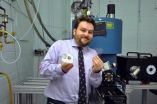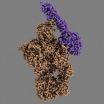(Press-News.org) UCLA stem cell researchers have found that a gene therapy regimen can safely restore immune systems to children with so-called "Bubble Boy" disease, a life threatening condition that if left untreated can be fatal within one to two years.
In the 11-year study, researchers were able to test two therapy regimens for 10 children with ADA-deficient severe combined immunodeficiency (SCID). During the study, they refined their approach to include a light dose of chemotherapy to help remove many of the blood stem cells in the bone marrow that are not creating an enzyme called adenosine deaminase (ADA), which is critical for the production and survival of healthy white blood cells, said study senior Dr. Donald Kohn, a professor of pediatrics and of microbiology, immunology, and molecular genetics in Life Sciences and a member of the Eli and Edythe Broad Center of Regenerative Medicine and Stem Cell Research at UCLA.
The refined gene therapy and chemotherapy regimen proved superior to the other method tested in the study, restoring immune function to three of the six children who received it, Kohn said. Going forward, an even further refined regimen using a different type of virus delivery system will be studied in the next phase of the study, which already has enrolled eight of the 10 patients needed.
The study appears Aug. 30 in the advance online issue of the peer-reviewed journal Blood.
"We were very happy that in the human trials we were able to see a benefit in the patients after we modified the protocol," Kohn said. "Doctors treating ADA-deficient SCID have had too few options for too long, and we hope this will provide them with an efficient and effective treatment for this devastating disease."
Children born with SCID, an inherited immunodeficiency, are generally diagnosed at about six months. They are extremely vulnerable to infectious diseases and don't grow well. Chronic diarrhea, ear infections, recurrent pneumonia and profuse oral candidiasis commonly occur in these children. SCID cases occur in about 1 of 100,000 births
Currently, the only treatment for ADA-deficient SCID calls for injecting the patients twice a week with the necessary enzyme, Kohn said, a life-long process that is very expensive and often doesn't return the immune system to optimal levels. These patients also can undergo bone marrow transplants from matched siblings, but matches can be very rare.
About 15 percent of all SCID patients are ADA-deficient. Kohn and his team used a virus delivery system that he had developed in his lab in the 1990s to restore the gene that produces the missing enzyme necessary for a healthy immune system. To date, about 40 children with SCID have received gene therapy in clinical trials around the world, Kohn said.
Two slightly different viral vectors were tested in the study, each modified to deliver healthy ADA genes into the bone marrow cells of the patients so the needed enzyme could be produced and make up for the cells that don't have the gene. Four of the 10 patients in the study remained on their enzyme replacement therapy during the gene therapy study. There were no side effects, but their immune systems were not sufficiently restored, Kohn said.
In the next six patients, the enzyme therapy was stopped and a small dose of chemotherapy was given before starting the gene therapy to deplete the ADA-deficient stem cells in their bone marrow. Of those patients, half had their immune systems restored. The human findings confirmed another study, also published recently in Blood by Kohn and UCLA colleague Dr. Denise Carbonaro-Sarracino, which tested the techniques in parallel, using a mouse model of ADA-deficient SCID.
One of Kohn's clinical trial patients enrolled in the first study was a baby boy diagnosed with ADA-deficient SCID at age 10 months. The boy had multiple infections, pneumonia, and persistent diarrhea and was not able to gain weight. He received the enzyme replacement treatment for three to four months, but did not improve and joined the gene therapy study in 2008. Today, that boy, who lives with his family in Arizona, is a thriving 5-year-old.
"You would never know he had been so sick," Kohn said. "It's a very promising response."
The boy's younger sister, also born with ADA-deficient SCID, was diagnosed at age four months and is enrolled in the second phase of the study. She's also doing well, Kohn said. In fact, it appears that children who are diagnosed and treated younger seem to do better.
###
The study was funded by the Doris Duke Charitable Foundation, the National Heart, Lung and Blood Institute at the National Institutes of Health and the U.S. Food and Drug Administration's Orphan Product Development award (1P50 HL54850 and RO1 FD003005).
The stem cell center was launched in 2005 with a UCLA commitment of $20 million over five years. A $20 million gift from the Eli and Edythe Broad Foundation in 2007 resulted in the renaming of the center. With more than 200 members, the Eli and Edythe Broad Center of Regenerative Medicine and Stem Cell Research is committed to a multi-disciplinary, integrated collaboration of scientific, academic and medical disciplines for the purpose of understanding adult and human embryonic stem cells. The center supports innovation, excellence and the highest ethical standards focused on stem cell research with the intent of facilitating basic scientific inquiry directed towards future clinical applications to treat disease. The center is a collaboration of the David Geffen School of Medicine, UCLA's Jonsson Cancer Center, the Henry Samueli School of Engineering and Applied Science and the UCLA College of Letters and Science. To learn more about the center, visit our web site at http://www.stemcell.ucla.edu.
UCLA stem cell researchers use gene therapy to restore immune systems in 'bubble babies'
2012-09-11
ELSE PRESS RELEASES FROM THIS DATE:
Interventions can reduce falls in people over 65 who live at home
2012-09-11
There is now strong evidence that some interventions can prevent falls in people over the age of 65 who are living in their own homes. However, the researchers who reached this conclusion say that care is needed when choosing interventions, as some have no effect. The full details are published this month in The Cochrane Library. This is an update of a previous report that contains data from 51 additional trials, enabling the authors to reach many more conclusions.
As people get older they may fall more often. The reasons vary, including problems with balance, vision ...
Inhaled pain relief in early labor is safe and effective
2012-09-11
Inhaled pain relief appears to be effective in reducing pain intensity and in giving pain relief in the first stage of labour, say Cochrane researchers. These conclusions came from a systematic review that drew data from twenty-six separate studies that involved a total of 2,959 women, and are published in The Cochrane Library.
Many women would like to have a choice in pain relief during labour and would also like to avoid invasive methods of pain management. Inhaling a mixture of oxygen and either a flurane derivative or nitrous oxide reduces pain, but enable the mother ...
Latinos more vulnerable to fatty pancreas, Type 2 diabetes, Cedars-Sinai study shows
2012-09-11
LOS ANGELES – Latinos are more likely to store fat in the pancreas and are less able to compensate by excreting additional insulin, a Cedars-Sinai study shows.
The research examining overweight, prediabetic patients, published online by Diabetes Care, is part of a focus by Cedars-Sinai's Heart Institute, Biomedical Imaging Research Institute and Diabetes and Obesity Research Institute, to identify biological measures that could help predict which patients are likely to develop type 2 diabetes.
"Prevention of diabetes is our goal," said Richard Bergman, PhD, director ...
Study provides insight into why severely obese women have difficulty getting pregnant from IVF
2012-09-11
Boston – One third of American women of childbearing age are battling obesity, a condition that affects their health and their chances of getting pregnant. Obese women often have poor reproductive outcomes, but the reasons why have not been clearly identified. Now, a novel study led by Catherine Racowsky, PhD, director of the Assisted Reproductive Technologies Laboratory at Brigham and Women's Hospital (BWH), and performed by Ronit Machtinger, M.D., of BWH, in collaboration with Catherine Combelles, PhD, of Middlebury College, gains further insight into the underlying ...
U of Toronto-led team induces high-temperature superconductivity in a semiconductor with Scotch tape
2012-09-11
September 10, 2012-- Issued by the UNIVERSITY OF TORONTO
Under strict embargo by Nature Communications until Tuesday, September 11, 11 a.m. EST
An international team led by University of Toronto physicists has developed a simple new technique using Scotch poster tape that has enabled them to induce high-temperature superconductivity in a semiconductor for the first time. The method paves the way for novel new devices that could be used in quantum computing and to improve energy efficiency.
"Who would have thought simply sticking things together can generate entirely ...
New discovery related to gum disease
2012-09-11
A University of Louisville scientist has found a way to prevent inflammation and bone loss surrounding the teeth by blocking a natural signaling pathway of the enzyme GSK3b, which plays an important role in directing the immune response.
The discovery of UofL School of Dentistry researcher David Scott, PhD, and his team recently published on-line first in the journal Molecular Medicine. The finding not only has implications in preventing periodontal disease, a chronic inflammatory disease that causes tooth loss, but also may have relevance to other chronic inflammatory ...
Breast cancer risks acquired in pregnancy may pass to next 3 generations
2012-09-11
Chemicals or foods that raise estrogen levels during pregnancy may increase cancer risk in daughters, granddaughters, and even great-granddaughters, according to scientists from Virginia Tech and Georgetown University.
Pregnant rats on a diet supplemented with synthetic estrogen or with fat, which increases estrogen levels, produce ensuing generations of daughters that appear to be healthy, but harbor a greater than normal risk for mammary cancer, the researchers report in today's Nature Communications.
Although the findings have not yet been validated in humans, the ...
Unnecessary oil disasters
2012-09-11
The BP oil disaster in the Gulf of Mexico 2010 could have been avoided if the experiences of earlier disasters had been put to use, researcher Charles Woolfson, Linköping university, claims. The United States government is now accusing BP of gross negligence and deliberate misconduct, and taking the company to court.
On April 20, 2010, the Deepwater Horizon oil rig exploded in the ocean south of the southern coast of the US. The explosion led to the deaths of eleven people and an unfathomable environmental catastrophe.
Charles Woolfson, former professor of Labour Sociology ...
Serious games could be integrated into surgical training subject to validation
2012-09-11
Serious gaming can be used to enhance surgical skills, but games developed or used to train medical professionals need to be validated before they are integrated into teaching methods, according to a paper in the October issue of the surgical journal BJS.
Researchers from The Netherlands reviewed 25 research studies covering 30 serious games published between 1995 and 2012.
"Many medical professionals may still have a rather out-dated view of the average gamer as being someone who is too young to vote, afraid of daylight and busy killing mystical dwarves in their parent's ...
Chain reaction in the human immune system trapped in crystals
2012-09-11
VIDEO:
The animation shows how the MASP-2 (blue) attaches itself to the complement protein C4 (orange), and the structural rearrangements that occur in the C4 due to this. Note that although...
Click here for more information.
The complement system is part of the innate immune system and is composed of about 40 different proteins that work together to defend the body against disease-causing microorganisms. The complement system perceives danger signals in the body by recognising ...

